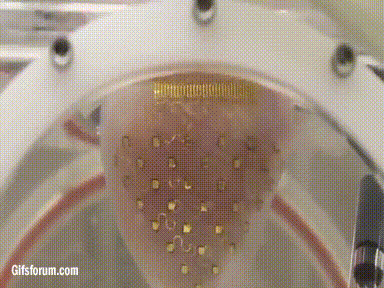Heart-hugging membrane could bring longer life for all
 An incredible new device fits over the heart like a bionic skin, could keep it beating forever, correct arrhythmia and prevent heart attack.
An incredible new device fits over the heart like a bionic skin, could keep it beating forever, correct arrhythmia and prevent heart attack.
The revolutionary new electronic membrane uses a spider-web network of sensors and electrodes to monitor the heart’s electrical activity around the clock.
Not only does it serve as a more functional sensor than ever before, the membrane could one day be used to deliver highly-targeted electrical impulses to correct imbalances and prevent potentially-fatal conditions.
Researchers from the US have created a prototype membrane which fits over a rabbit’s heart, and has kept it operating perfectly outside of a body in a nutrient and oxygen-rich solution.
Using high-resolution imaging and 3D-printing techniques, the membrane can be designed and made for each individual heart – allowing the perfect fit every time.
“When it senses such a catastrophic event as a heart attack or arrhythmia, it can also apply a high definition therapy,” said biomedical engineer Igor Efimov from Washington University, who helped design and test the device.
“It can apply stimuli, electrical stimuli, from different locations on the device in an optimal fashion to stop this arrhythmia and prevent sudden cardiac death,” Efimov has told reporters in the US.
A major innovation that has facilitated the membrane’s design was the invention of stretchable electronics developed by John Rogers, a materials scientists from the University of Illinois.
Dr Rogers’ design uses traditional silicon materials, laid out in curved and twisted designs to allow them to stretch and bend in all directions.
The most immediate use for the device will be as a research tool. It will allow studies to find out how heart rate changes for different conditions.
Down the line the researchers say electronic membranes of this kind will be much more common, monitoring at-risk individuals and safeguarding them from heart attacks.
More details are available in the full report, accessible here.








 Print
Print